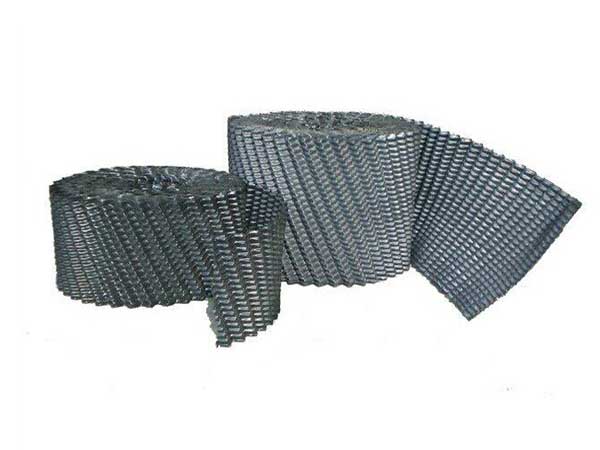Round Tower Packing
Author:Trlon Views: Time:2020-09-15
Cooling tower packing installation
Packing is the most important part of the cooling tower. Its efficiency depends on the full contact between the cooling water and air in the packing. The filler has a temperature resistance of 50℃~68℃, aging resistance, excellent performance, UV resistance and long life. Simply put, the role of fillers in cooling towers is to increase heat dissipation, extend cooling water residence time, increase heat exchange area, and increase heat exchange. Distribute water evenly. It is not to fill the tower with something that needs to be cooled. A cooling tower is a device that cools the hot fluid (including water) to a reasonable temperature. The waste heat generated during industrial production or refrigeration processes is generally conducted away with cooling water. The role of the cooling tower is to exchange the cooling water with the waste heat in the tower and the air, so that the waste heat is transferred to the air and dispersed into the atmosphere. Cooling tower application range: air conditioning cooling system, refrigeration series, electric furnace, injection molding, tanning, power generation, steam turbine, aluminum profile processing, air compressor, industrial water cooling and other fields.
Cooling tower packing classification
S wave packing, oblique staggered packing, stepped trapezoidal inclined wave packing, differential sine wave packing, point wave packing, hexagonal honeycomb packing, two-way wave packing, oblique wave packing, inclined staggered cooling tower packing. Oblique staggered packing has technology Advanced, reasonable design, reliable data, durable. Tests and production operation show that it has good cooling effect, low ventilation resistance, strong hydrophilic performance, and large contact area. The oblique staggered packing adopts two forms of ring material and screw assembly. The inclination angle is generally 60 degrees, and is mainly used for circular counterflow cooling towers.
NezCooling tower noise reduction treatment manufacturerPVC honeycomb cooling tower packing: The hexagonal honeycomb packing produced has two forms: inclined pipe and straight pipe. There are two kinds of materials: polypropylene and glass steel. Inclined pipes are mainly used for various sedimentation and sand removal functions. It is the most widely used water treatment device in water supply and drainage projects in the past ten years. It has the advantages of wide application range, high treatment effect and small area. It is suitable for water inlet desanding, general industrial and domestic feedwater sedimentation, sewage sedimentation, oil separation and Owari concentration, etc. It is suitable for new construction projects and the transformation of existing old ponds. It can achieve good economic benefits.
NezCooling tower noise reduction treatment manufacturerInclined wave cooling tower packing: advanced design, with low ventilation resistance, strong hydrophilicity, and large corner area.
NezCooling tower noise reduction treatment manufacturerS-wave cooling tower packing: The packing has novel structure design, large hydrophilic area and good cooling effect. It is mainly used for industrial countercurrent cooling towers and hyperbolic cement cooling towers in power plants.
NezCooling tower noise reduction treatment manufacturerTrapezoidal cooling tower packing: The ladder-shaped oblique wave packing is designed by the Institute of Water Conservancy and Electric Power Research Institute of Cooling Water. The cross-section of this packing sheet is a trapezoidal oblique wave, which increases the deflection of soda and water in the packing and slows down the splash speed of the water film. The filler extends the heat exchange time and improves the heat dissipation performance. Has a good overall performance. The channel area is large, the bonding is firm, and the overall assembly has good rigidity. It can be widely used in industrial cooling towers. The factory currently produces two materials: polyvinyl chloride (PVC) and polypropylene (PP).
Article Address:https://www.trlen.com/cta/116.html
